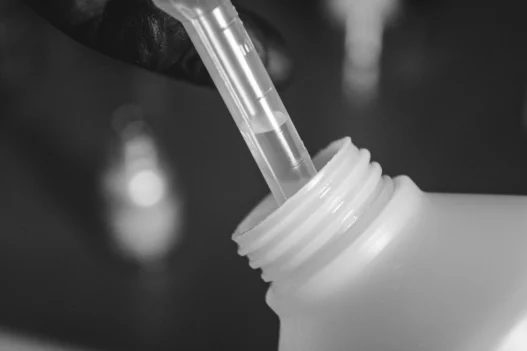Terbutaline is a medication commonly used to treat asthma and certain other pulmonary conditions. This drug works by relaxing the muscles in the airways, making it easier for individuals to breathe. Given the prevalence of asthma and related respiratory issues in today’s society, Terbutaline plays a crucial role in improving the quality of life for those affected by these conditions. Its availability and effectiveness have made it an essential tool for managing respiratory health and ensuring individuals can lead active, healthy lives.
Table of Contents:
- 💡 Commercial Applications
- ⚗️ Chemical & Physical Properties
- 🏭 Production & Procurement
- ⚠️ Safety Considerations
- 🔬 Potential Research Directions
- 🧪 Related Compounds
💡 Commercial Applications
Terbutaline, a medication belonging to the class of beta-2 adrenergic agonists, is primarily used in the treatment of asthma and other respiratory conditions due to its ability to relax the smooth muscles of the airways. Commercially and industrially, Terbutaline is particularly utilized in the production of inhalers and nebulizers for the delivery of medications to patients with respiratory issues.
In addition to its role in treating asthma and bronchospasm, Terbutaline is also used in delaying premature labor by relaxing the uterine muscles. As a tocolytic agent, Terbutaline helps prevent contractions of the uterus and prolong pregnancy until the fetus reaches a more stable gestational age. This application of Terbutaline has become an integral part of managing preterm labor in obstetrics.
While primarily known for its medical applications, Terbutaline also finds use in veterinary medicine for treating conditions such as equine asthma and chronic obstructive pulmonary disease in horses. Given its bronchodilator properties, Terbutaline has shown efficacy in improving respiratory function and alleviating symptoms in various animal species, under the guidance of a veterinarian.
⚗️ Chemical & Physical Properties
Terbutaline is a white crystalline powder with no characteristic odor in its pure form.
The molar mass of Terbutaline is approximately 301.4 g/mol, and its density is around 1.11 g/cm3. When compared to common food items such as sugar (molar mass of 342.3 g/mol) and salt (density of 2.16 g/cm3), Terbutaline exhibits lower molar mass and density.
The melting point of Terbutaline is around 106-108°C, while its boiling point is approximately 280°C. In comparison, common food items like butter (melting point of 32-35°C) and water (boiling point of 100°C) have significantly lower melting and boiling points than Terbutaline.
Terbutaline is slightly soluble in water and exhibits low viscosity. This contrasts with common food items like sugar (high solubility in water) and honey (high viscosity).
🏭 Production & Procurement
Terbutaline is typically produced through a multi-step chemical synthesis in a laboratory setting. This process involves the reaction of various organic compounds to form the final product, which is then purified and isolated. The final Terbutaline product is typically in the form of a powder or a solution.
Terbutaline can be procured through pharmaceutical companies or chemical suppliers who produce and distribute the medication. It is available in various forms, including tablets, injections, and inhalers. Once procured, Terbutaline can be transported via standard shipping methods, such as trucks, planes, or ships, depending on the distance and urgency of delivery.
When procuring Terbutaline, it is important to ensure that proper storage and transportation conditions are maintained to prevent degradation or contamination of the medication. This may include storing the medication at the recommended temperature and humidity levels, as well as ensuring that it is protected from light and moisture. Additionally, proper documentation and labeling of the medication are essential to ensure traceability and compliance with regulatory requirements.
⚠️ Safety Considerations
Safety considerations for Terbutaline include the potential for side effects such as tremors, dizziness, headache, and palpitations. Patients with a history of heart conditions, high blood pressure, or seizure disorders should use Terbutaline with caution. It is recommended to monitor heart rate and blood pressure regularly while using this medication, as well as to follow the prescribed dosage carefully to minimize the risk of adverse effects.
Hazard statements for Terbutaline include the potential for irritation to the respiratory system if inhaled and irritation to the skin and eyes upon contact. Prolonged or repeated exposure may result in nervous system effects such as dizziness or headaches. It is important to use proper protective equipment when handling Terbutaline, such as gloves and goggles, to prevent skin and eye irritation.
Precautionary statements for Terbutaline include avoiding contact with skin, eyes, and clothing, as well as ensuring adequate ventilation when handling the medication. In case of inhalation, move to fresh air and seek medical attention if symptoms persist. Store Terbutaline in a cool, dry place away from heat and sources of ignition, and keep out of reach of children and pets. Follow proper disposal guidelines for unused or expired medication to prevent environmental contamination.
🔬 Potential Research Directions
Potential research directions for Terbutaline may include further investigation into its long-term safety and efficacy when used for treating acute bronchospasm in patients with asthma or chronic obstructive pulmonary disease. Studies could focus on comparing the effectiveness of Terbutaline with other bronchodilators or exploring its potential role in combination therapy with other drugs.
Research may also explore the use of Terbutaline in special populations, such as pregnant women with preterm labor. Studies could assess the drug’s efficacy in preventing premature birth and its impact on neonatal outcomes. Additionally, investigations into the optimal dosing regimens and routes of administration for Terbutaline in this specific patient population may be warranted.
Further studies may be conducted to elucidate the mechanisms of action of Terbutaline, particularly its selective beta-2 adrenergic receptor agonist activity. Research could delve into the molecular pathways involved in bronchodilation and smooth muscle relaxation mediated by Terbutaline, as well as its potential effects on inflammatory processes in the airways. Additionally, investigations into the safety profile of Terbutaline, particularly in terms of cardiovascular effects, may provide valuable insights for clinical practice.
🧪 Related Compounds
One similar compound to Terbutaline based upon molecular structure is Albuterol. Albuterol is a beta-2 adrenergic agonist with a similar chemical structure to Terbutaline. It is commonly used to treat asthma and chronic obstructive pulmonary disease by relaxing the smooth muscles in the airways.
Another similar compound to Terbutaline is Salbutamol. Salbutamol, also known as Albuterol in the United States, is a medication that works by stimulating beta-2 adrenergic receptors in the lungs. Like Terbutaline, Salbutamol is used to treat conditions such as asthma and chronic obstructive pulmonary disease.
Clenbuterol is another compound similar to Terbutaline. Clenbuterol is a beta-2 adrenergic agonist that is often used as a bronchodilator to treat asthma. It works by relaxing the smooth muscles in the airways, similar to the mechanism of action of Terbutaline. However, Clenbuterol is also used as a performance-enhancing drug in some cases.









